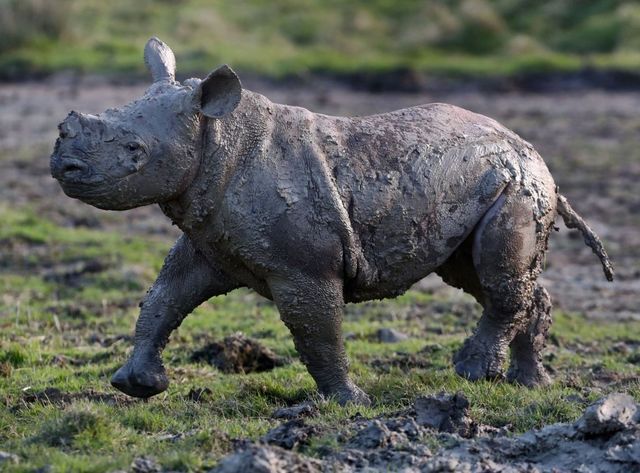
Considering how squishy, hairless, and thin-skinned humans are, it comes as no surprise that ultraviolet light from the sun can totally mess us up. And it's not just lighter-skinned people who get sunburns and skin cancer from sun damage — even the darker-skinned among us aren't totally safe spending a sunny day outside unprotected, even though having darker skin does a bit to safeguard us from ultraviolet light. As a result, we humans have to wear clothes and hats and sunscreen. But what do other animals do to protect themselves from the sun?
The bodies of a lot of animals are protected from the sun by coverings of some kind — feathers, scales or fur — which not only shield them from UV damage, but also help their bodies retain moisture. But depending on an animal's habits, coloring or the density of its fur, sunburn can be a serious problem. Newly-shorn sheep and hairless breeds of dogs and cats need to watch themselves, of course, but they're getting sunburns because of something we humans did to them, either through breeding or by removing all their dense, protective hair to knit into sweaters. They haven't really had much time to develop behavioral or physiological responses to the threat of the sun.
Advertisement
Pigs, on the other hand, have naturally sparse hair and lots of exposed skin, making them prone to debilitating sunburns. Both wild and domesticated pigs are famous for wallowing in mud puddles, and this deeply-ingrained behavior serves several functions, primarily keeping them cool because they lack sweat glands, but caking themselves with mud to create a physical barrier between the skin and the sun. Rhinoceroses also take long, luxurious mud baths to fend off damaging UV light, and elephants spend a lot of time tossing sand on their backs — a skill they pass onto their children by throwing sand at them every chance they get. What these animals are doing is a lot like our habit of wearing clothes (but literally dirtier). Other animals that live in places where intense sun is a problem just find a nice tree to sit under or a burrow to hang out in during the times of day when sunburn would be a problem.

Some animals go beyond learned behavior and actually have built-in mechanisms to deal with the sun. Giraffes, for instance, spend inordinate amounts of time feeding on leaves with their tongues sticking out, so the first several inches on their tongues are black — probably to keep them from getting sunburned, biologists theorize — and the backs of their tongues are pink. Hippos, who have particularly sensitive skin around their eyes and ears, protect these delicate areas by excreting a reddish-orange antibiotic fluid that absorbs UV light. It makes them look like they're crying tears of blood, so if you ever see a hippo with bloody-looking eyeballs, don't be alarmed. It's just sunscreen. Oozy, secreted sunscreen.
And it's not just those of us in the mammal kingdom who need to concern ourselves with UV radiation. A study published in 2000 in the journal Physiology & Biochemistry, for instance, suggested that declines in certain amphibian populations might be due to tadpoles getting sunburned. And in 2015, for example, scientists discovered that zebrafish can biosynthetically produce a chemical called gadusol that protects them against UV light. Gadusol has also been found in shrimp, sponges and sea urching, and researchers have found evidence that amphibians, reptiles, and birds can also produce the compound — though mammals, sadly, lack the ability.

Advertisement

